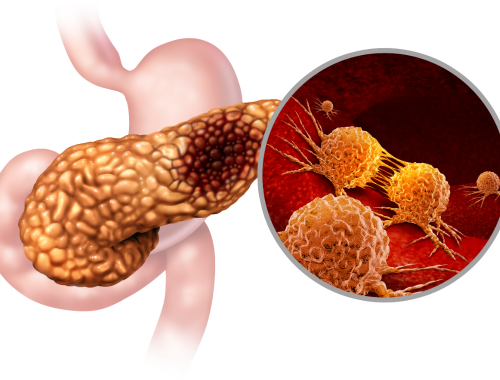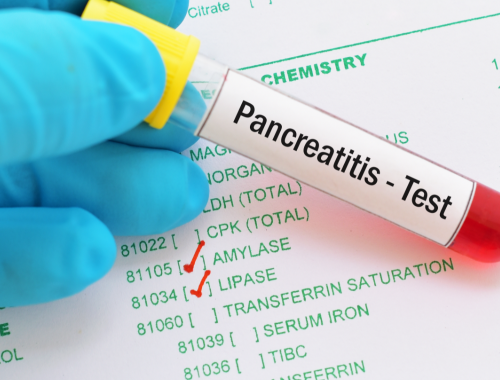Difference Between Pancreatitis and Pancreatic Cancer

Pancreatic cancer is a malignancy in the pancreas, whereas pancreatitis is a serious condition which involves inflammation (swelling and pain) of the pancreas over a short period of time. Pancreatitis (also termed as pancreas inflammation) comes in 2 primary forms: acute (short-term) and chronic (long-term).

Similarity
Both conditions cause swelling and pain. Both the illnesses are associated with pancreas – an organ responsible for aiding in metabolism of sugars and digestion.
Pancreatitis
Inflammation of the pancreas is referred to as pancreatitis. Pancreatitis can progress and develop over many years or it can start quickly and continue for several days. Gallstones (cholelithiasis) and long-term, excessive alcohol usage are just two of the many causes.
Upper abdomen pain, nausea, and puking are symptoms. Hospitalization and medical care are typically necessary for treatment. The underlying reason is then treated after the patient has been stabilized.
Pancreatic cancer
Pancreatic cancer or malignancy is the cancer of the pancreas. The pancreas is responsible for aiding metabolism and digestion process by producing an enzyme that aids in it. The cancer of pancreas is not detected in early stages. It spreads quite fast and has a poor prognosis.
The cancer does not show any signs and symptoms in the initial stages. However, in the later stages as well when the disease has progressed, there are no specific issues. Some symptoms may include loss of weight and loss of appetite.
The options for treatment of pancreatic cancer include chemotherapy or surgical removal of the cancer inflicted pancreas.
Difference between Pancreatitis and Pancreatic cancer
Definition
Pancreatitis
Inflammation or swelling of the pancreas is termed as pancreatitis
Pancreatic cancer
The cancer or malignancy of the pancreas is termed as pancreatic cancer
Symptoms
Pancreatitis
- High temperature
- Abnormal heartbeat
- Cullen’s sign (periumbilical ecchymosis – slight bruising on the belly button and elsewhere)
- Too tender abdomen
- Gray-Turner sign (uncommon subcutaneous manifestation of intra-abdominal pathology – fleece bruises)
- Modules with erythematous skin
Pancreatic cancer
- Darker pee
- Poo which is pale than usual
- Fluid in the abdomen
- Intense pain in the middle back
- Fatigue
- Jaundice
- Itchy skin
Causes
Pancreatitis
- Excessive alcohol consumption
- Metabolic disorder
- Infections
- Medications
- Surgery
- Gallstones
- Trauma
- Genetics (family history of disorder of pancreas)
- Excessive triglycerides
- Cystic fibrosis
- Autoimmune disease.
Pancreatic cancer
- Smoking
- Chronic pancreatitis (swelling or inflammation of the pancreas)
- Blood sugar (diabetes)
- Genetics or family history of Pancreatic cancer
Summary
The points of difference between Pancreatitis and Pancreatic cancer have been summarized as below:

FAQ:
Can pancreatitis be mistaken for pancreatic cancer?
Yes, very often inflammation of the pancreas (pancreatitis) and pancreatic cancer both present similar signs and symptoms. They look similar on radiology scans as well.
How long does it take for pancreatitis to turn into pancreatic cancer?
Patients with chronic pancreatitis after 5 years following the diagnosis of their disease have a nearly 8-fold higher probability of developing pancreatic cancer.
Is pancreatitis the beginning of pancreatic cancer?
Since pancreatic cancer (Cancer that begins in the pancreas) accounts for about one percent of acute pancreatitis admissions, chronic pancreatitis is sometimes beginning and early sign of pancreatic cancer.
How do you rule out pancreatic cancer?
The only method to confirm or rule out pancreatic cancer includes biopsy – a procedure in which a small sample of tumor from pancreas is removed and investigated under the microscope. Some other methods include ultrasound, MRI – Magnetic Resonance Imaging (MRI), Computerized Tomography (CT) scans and positron emission tomography (PET) scans.
How I first knew I had pancreatic cancer?
The first signs of pancreatic cancer may include unexplainable back pain that extends from the abdomen, light colored stool, an involuntary weight reduction or loss of appetite. Another confirmed sign is the yellowing of your eyes and skin indicating jaundice.
When should you suspect pancreatic cancer?
One of the initial indications of pancreatic cancer is frequent jaundice, or yellowing of the skin and eyes. In order to diagnose the cause of jaundice, doctors frequently order blood tests to evaluate liver function in their patients.
What does pancreatic cancer feel like in the beginning?
A dull, fluctuating discomfort in the upper abdomen (belly) and/or middle or upper back is a typical sign of pancreatic cancer. Because it might put pressure on the spine, this is most likely the result of a tumor that has developed in the pancreas’ body or tail.
What are 3 overlooked pancreatic cancer symptoms?
- Poor appetite
- Blood clots
- Weight loss
- Nausea and vomiting
- Liver or gallbladder enlargement
- Difference Between Global Warming and Greenhouse Effect - May 18, 2024
- Difference Between Vaccination and Immunization - March 3, 2024
- Difference Between Selective Mutism and Autism - February 25, 2024
Search DifferenceBetween.net :
Leave a Response
References :
[0]Kamisawa, T., Wood, L. D., Itoi, T., & Takaori, K. (2016). Pancreatic cancer. The Lancet, 388(10039), 73-85.
[1]Lee, P. J., & Papachristou, G. I. (2019). New insights into acute pancreatitis. Nature reviews Gastroenterology & hepatology, 16(8), 479-496.
[2]Mederos, M. A., Reber, H. A., & Girgis, M. D. (2021). Acute pancreatitis: a review. Jama, 325(4), 382-390.
[3]Mizrahi, J. D., Surana, R., Valle, J. W., & Shroff, R. T. (2020). Pancreatic cancer. The Lancet, 395(10242), 2008-2020.
